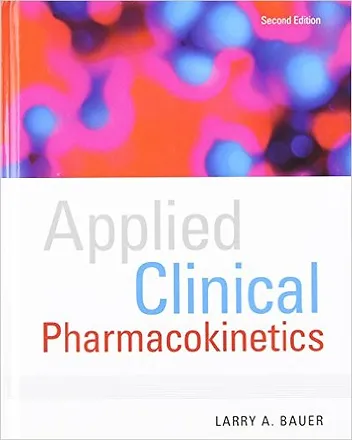[Free Download E-Book] Clinical Pharmacokinetics 2nd Edition
15:00Clinical Pharmacokinetics 2nd Edition | Larry A. Bauer Pharm.D
Introduction
Clinical pharmacokinetics is the discipline that applies pharmacokinetic concepts and principles in humans in order to design individualized dosage regimens which optimize the therapeutic response of a medication while minimizing the chance of an adverse drug reaction. Pharmacokinetics is the study of the absorption, distribution, metabolism, and excretion of drugs.1 When drugs are given extravascularly (e.g., orally, intramuscularly, applied to the skin via a transdermal patch, etc.), absorption must take place for the drug molecules to reach the systemic circulation. In order to be absorbed, the drug molecules must pass through several physiological barriers before reaching the vascular system. For example, when a medication is given orally, the drug dosage form must release drug molecules via dissolution, and the molecules must pass through the various layers of the gastrointestinal tract where they enter capillaries. Distribution occurs when drug molecules that have entered the vascular system pass from the bloodstream into various tissues and organs such as the muscle or heart. Metabolism is the chemical conversion of the drug molecule, usually by an enzymatically mediated reaction, into another chemical entity referred to as a metabolite. The metabolite may have the same, or different, pharmacological effect as the parent drug, or even cause toxic side effects. Excretion is the irreversible removal of drug from the body and commonly occurs via the kidney or biliary tract.
Contents
PART I BASIC CONCEPTS
1 Clinical Pharmacokinetic and Pharmacodynamic Concepts
2 Clinical Pharmacokinetic Equations and Calculations
3 Drug Dosing in Special Populations: Renal and Hepatic Disease,
Dialysis, Heart Failure, Obesity, and Drug Interactions
PART II ANTIBIOTICS
4 The Aminoglycoside Antibiotics
5 Vancomycin
PART III CARDIOVASCULAR AGENTS
6 Digoxin
7 Lidocaine
8 Procainamide/N-Acetyl Procainamide
1 Clinical Pharmacokinetic and Pharmacodynamic Concepts
2 Clinical Pharmacokinetic Equations and Calculations
3 Drug Dosing in Special Populations: Renal and Hepatic Disease,
Dialysis, Heart Failure, Obesity, and Drug Interactions
PART II ANTIBIOTICS
4 The Aminoglycoside Antibiotics
5 Vancomycin
PART III CARDIOVASCULAR AGENTS
6 Digoxin
7 Lidocaine
8 Procainamide/N-Acetyl Procainamide
9 Quinidine
PART IV ANTICONVULSANTS
10 Phenytoin
11 Carbamazepine
12 Valproic Acid
13 Phenobarbital/Primidone
14 Ethosuximide
PART V IMMUNOSUPPRESSANTS
15 Cyclosporine
16 Tacrolimus
PART VI OTHER DRUGS
17 Lithium
18 Theophylline
If there any broken links, Do not hesitate to contant us on our email at pharmacynearus@gmail.com

0 comments